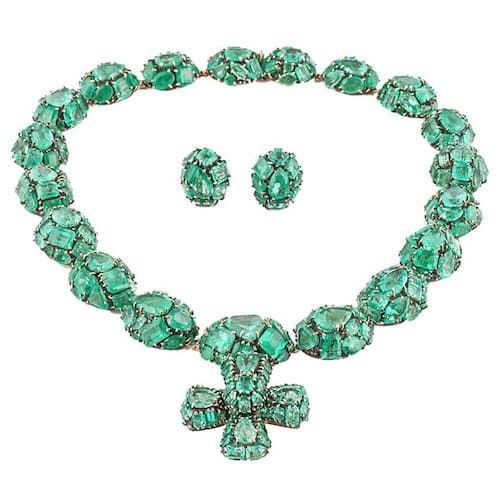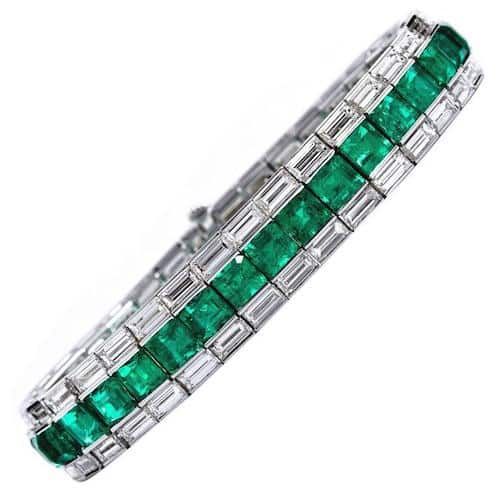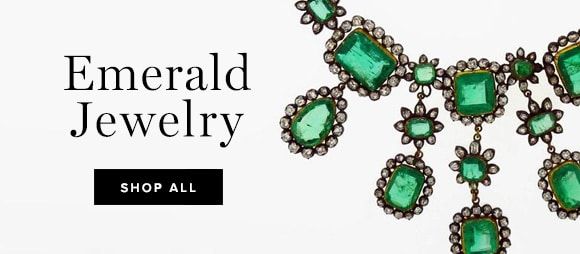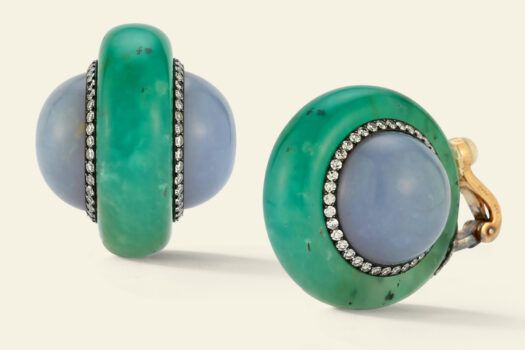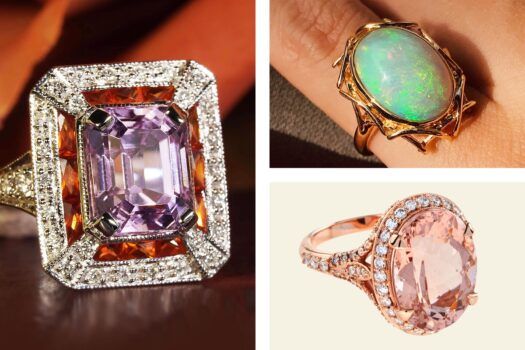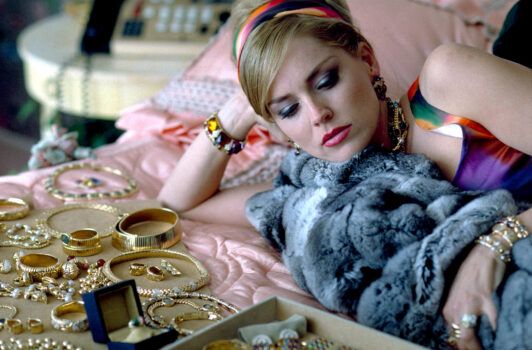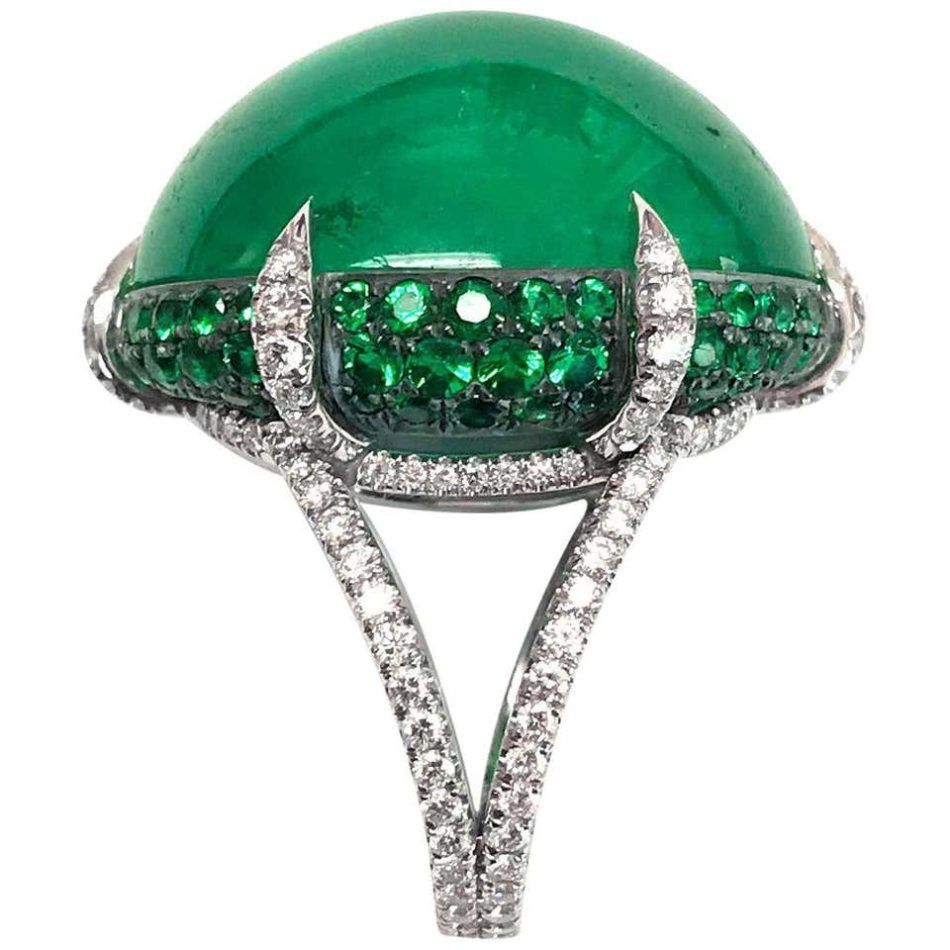
Dorothy may have worn ruby slippers, but it was the Emerald City that she was trying to get to. Upon her arrival, she was advised to wear green-tinted eyeglasses to protect her eyes from all the “brightness and glory” in L. Frank Baum’s book The Wizard of Oz. May babies can wear this beautiful stone, distinguished by its rich green color, on their way to see the Wizard or any other magical place.
Chemical Composition
Emerald, that beautiful dark green gem that completes the trifecta of precious stones, is part of the beryl family. Do you remember which other birthstone it is related to? Hint: you don’t have to go far back in time — it’s aquamarine, the March birthstone. What sets an emerald apart from a green beryl is its color. Green beryls can be light green, whereas emeralds are bluish green to true green. The most valuable emeralds are the ones that have this deep color and no visible inclusions.
Wonder what the relation is between an emerald and an emerald-cut stone? This square cut with beveled corners actually shows off the beauty of emeralds better than most cuts. Of course, in the hands of a capable jeweler, any cut is possible. However, while emeralds rank 7.5 to 8 on the Mohs Hardness Scale, they tend to be a bit brittle, so this square cut is sensitive to the stone’s natural limitations.
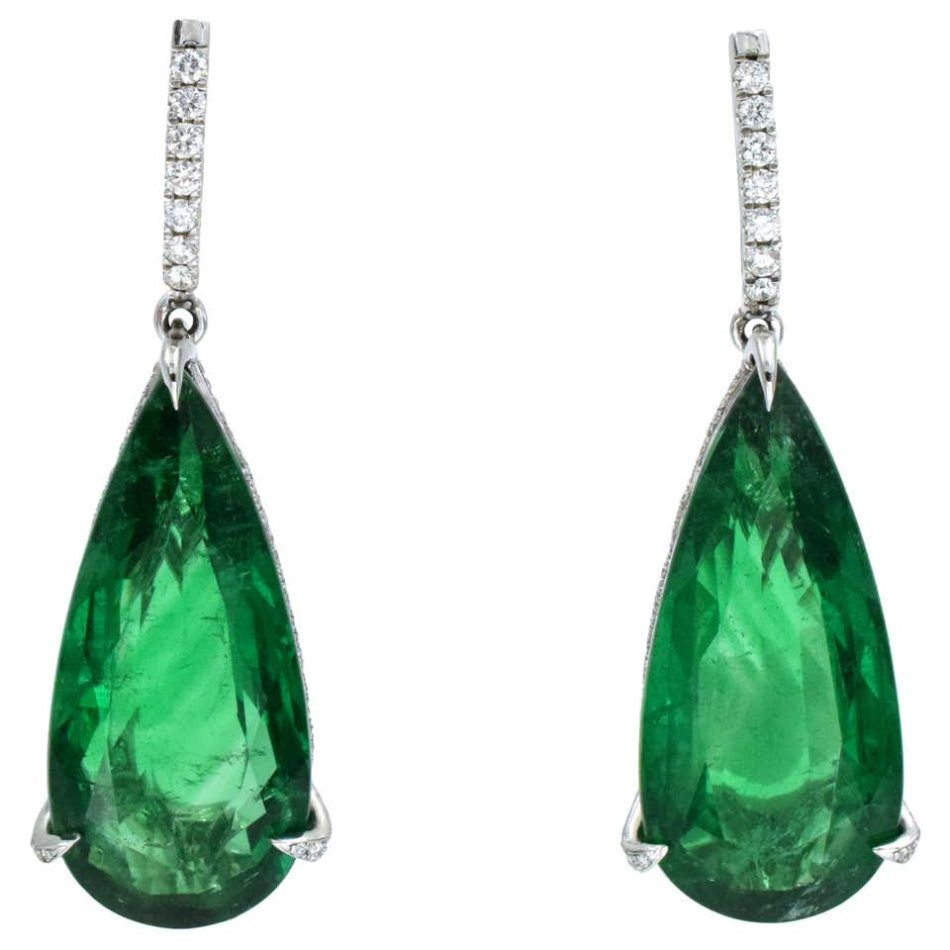
Historical Origins
No one liked emeralds more than Elizabeth Taylor (or her alter ego, Cleopatra). Emeralds were first discovered in Egypt around 330 BC. The stone’s name originated from the ancient Greek word for green, “smaragdus.” According to the GIA, “Emeralds from what is now Colombia were part of the plunder when 16th-century Spanish explorers invaded the New World. The Incas had already been using emeralds in their jewelry and religious ceremonies for 500 years. The Spaniards, who treasured gold and silver far more than gems, traded emeralds for precious metals. Their trades opened the eyes of European and Asian royalty to emerald’s majesty.” There are numerous myths attributed to the emerald’s spiritual powers, like placing an emerald under your tongue will allow you to see the future. But be careful not to swallow it, or that future won’t be so bright!
There are many important (read: large) emeralds in museum collections around the world. The Patricia Emerald, named after the miner’s daughter, is a 632-carat dihexagonal (or 12-sided) crystal that was discovered in Colombia in 1920 and now resides at the American Museum of Natural History in New York.
The Smithsonian Museum of Natural History in Washington has in its possession the Hooker Emerald, a 75.47-carat Colombian stone. That emerald had been acquired in the 16th or 17th century by Spanish conquistadores and shipped to Europe. It later belonged to Abdul Hamid II, Sultan of the Ottoman Empire (1876–1909), who wore it on his belt buckle. Purchased at auction by Tiffany & Co. in 1911, the Hooker Emerald was set it into a tiara and featured in the New York World’s Fair “House of Jewels” exhibit in 1940. Today, it is part of a brooch, also designed by the jewelry house.
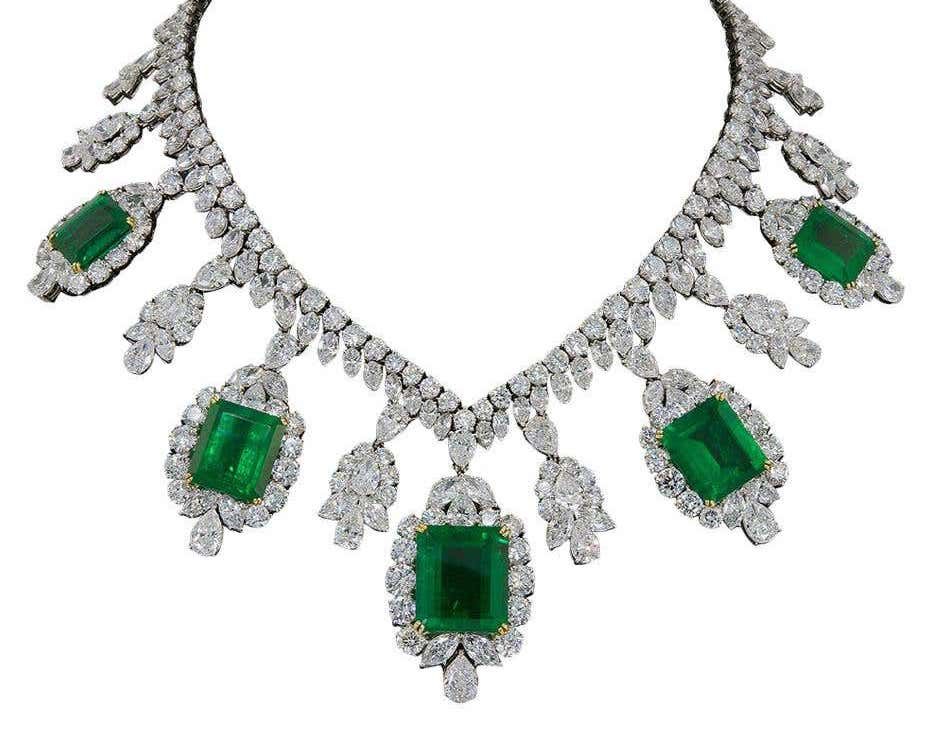
Of similar origin is the 37.8-carat Chalk Emerald, also in the Smithsonian collection. According to the curators of the Gem Gallery at the Smithsonian, “These green gems were used by indigenous peoples for at least 1,000 years before the arrival of the Spanish conquistadors in the 16th century. Although spurred primarily by their passion for gold and silver, the Spanish quickly recognized the potential of the exquisite green crystals and took control of the mines. Emeralds became popular among European royalty and were shipped from the New World by the boatload.
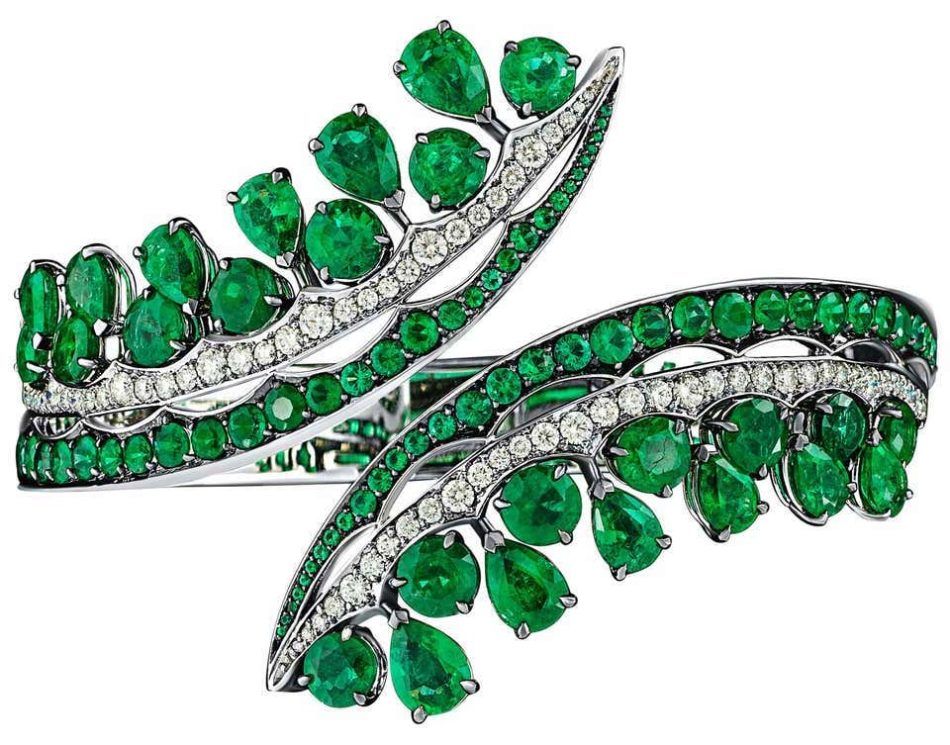
In 2015, the Metropolitan Museum of Art in New York acquired a 17th- to 18th-century repoussé and chased gold crown with 443 emeralds made by goldsmiths from Colonial Spanish America. The “Crown of the Andes” was made to adorn a statue in the cathedral of Popayán in the Spanish viceroyalty of New Granada (now Colombia). The crown measures 13.5 inches in height and 13.25 inches in diameter and weighs 5.3 pounds. It was constructed in two sections — the diadem first, around 1660, and the arches second, around 1770. The estimated weight of the distinctive deep bluish-green emeralds is 846.15 carats, with the largest a 24-carat gemstone known as the Atahualpa Emerald. It was not uncommon for such opulent objects to be made as gifts and adornment for the sacred image of the Virgin.
Now for royalty of another kind: Hollywood royalty. During the December 2011 auction of Elizabeth Taylor’s jewels that was held at Christie’s, there was a suite of emerald jewels that had been by Bulgari and gifted to the actress by Richard Burton to commemorate their engagement. The suite consisted of an emerald and diamond ring, an emerald and flower diamond brooch, an emerald and diamond necklace, an emerald and diamond pendant brooch, a pair of emerald and diamond ear pendants and an emerald and diamond bracelet. The suite collectively brought in close to $21 million dollars, with the most valuable piece being the emerald and diamond pendant brooch, which had a hammer price of $6.5 million.
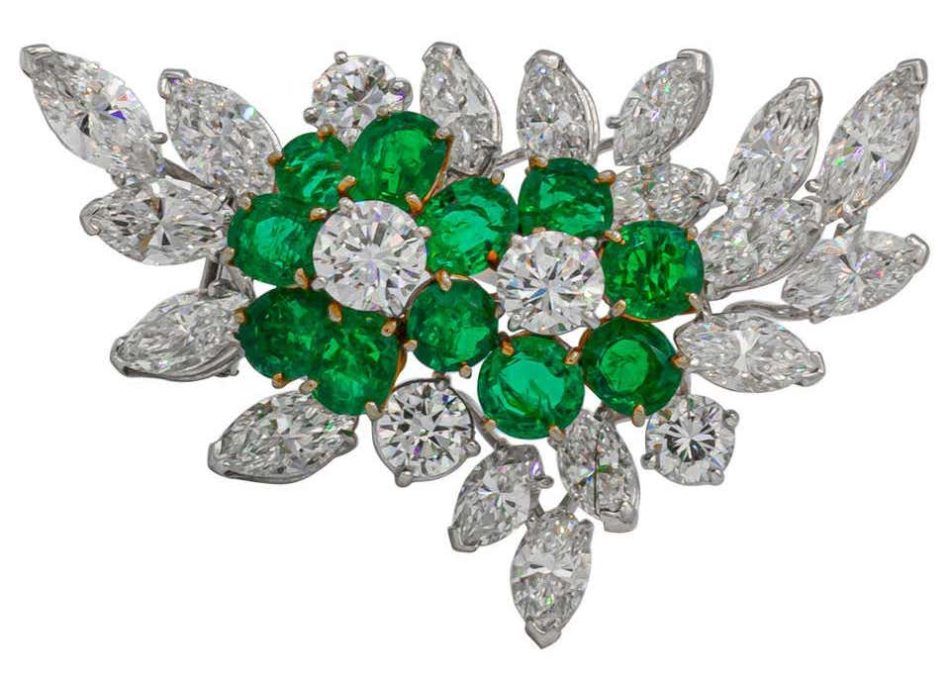
Geographic Locations
As we have seen from the examples of the most valuable emeralds, most of them have been mined in Columbia. This country has consistently produced the highest quality emeralds. The three main emerald mining areas in Colombia are Muzo, Coscuez and Chivor. Zambia is the second most important location for emeralds. Other areas where emeralds are mined include Brazil, Russia, Zimbabwae and Afghanistan.
